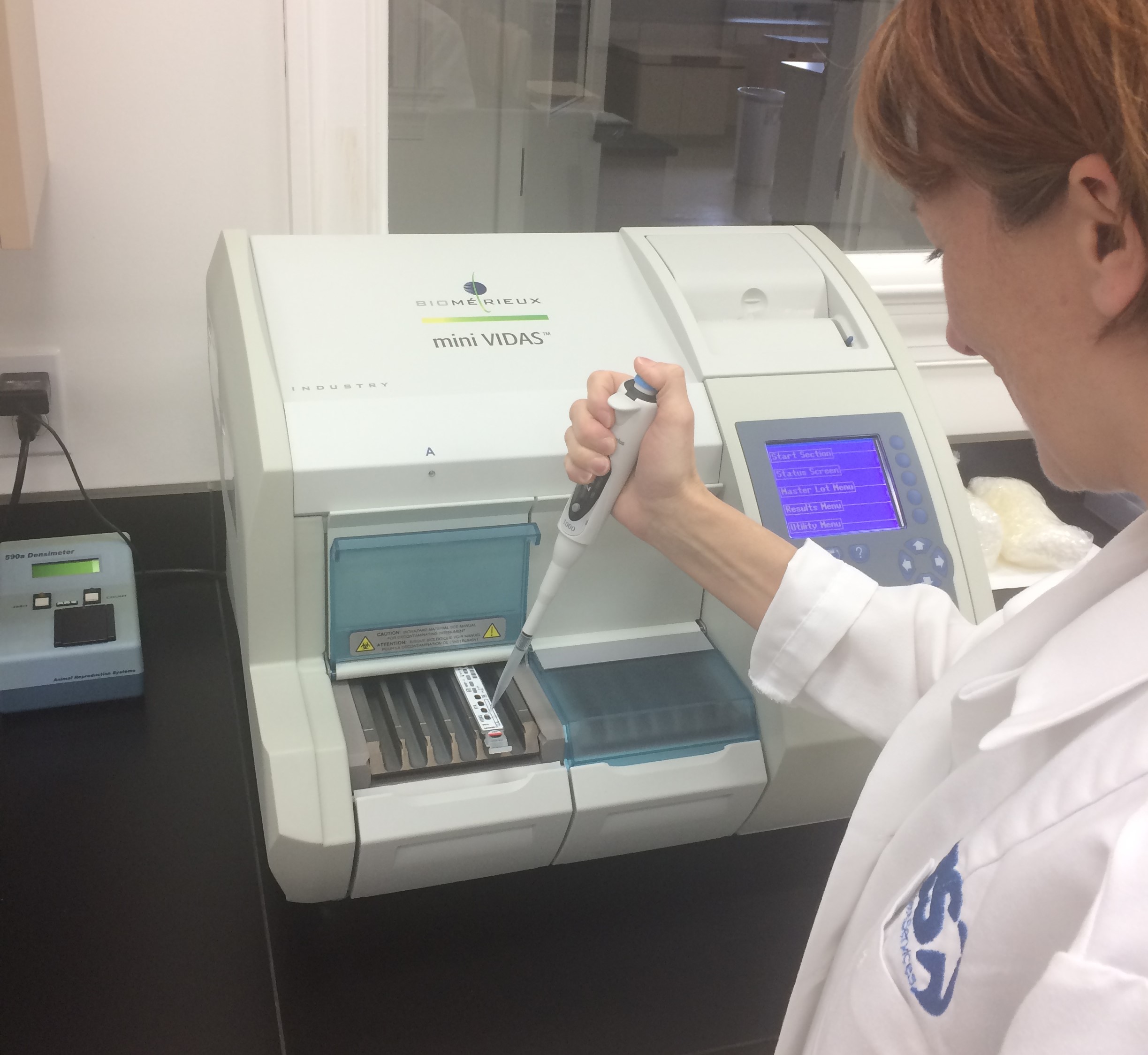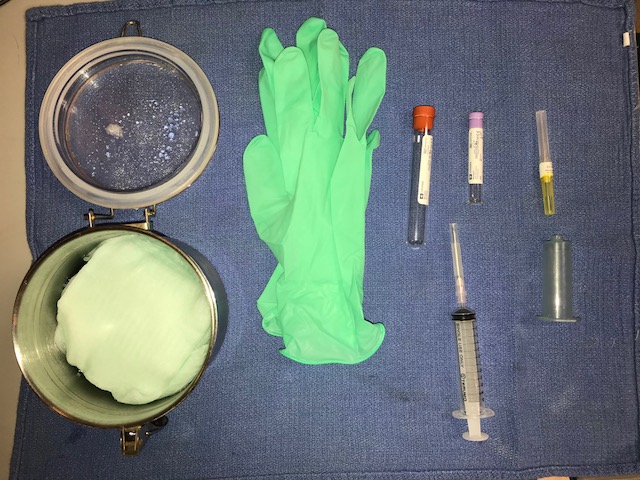
Endocrine diagnostics certainly have a place in the routine management of mares and stallions as well as in diagnosis of problems and diseases. However, there are likely more applications for measuring hormones in mares than stallions. Dr. Ed Squires will discuss the hormones tested in mares in this article and will then cover the testing of stallion hormones in a subsequent article.
Progesterone (P4) is the hormone most often measured in the mare. The reason for measuring the levels of P4 (photo left is instrument used at SBS-VS) might include:
- Determine whether the mare is cycling - Mares that come on to a breeding farm can be assessed with both ultrasound and/or P4 analysis to determine the presence of a corpus luteum (CL). Those with a CL and high P4 can be given prostaglandins to induce estrus.
- Measurement of P4 early in pregnancy (day 12-16) to determine if the mare has low P4 and needs supplementation
- To determine the cause of abnormal behavior. If a mare is always in estrus (heat) a blood sample might be taken and several hormones measured to determine the cause of prolonged estrus behavior.
- Measurement of P4 throughout gestation can be done to determine if progesterone is low and whether supplemental progesterone is needed. Alternatively, if the mare has been placed on Regumate (altrenogest) or an altrenogest generic, a blood sample is run for P4 to determine if the mare can be taken off of altrenogest.
Progesterone Supplementation of Pregnant Mares
There is nothing more controversial than progesterone supplementation of pregnant mares. My intent with this article is not to weigh in as to the pros and cons of progesterone supplementation but to focus on measuring progesterone during gestation. Before going any further, it is necessary to review the normal endocrine events in pregnant mares.
 From ovulation to about day 35 of gestation, the source of progesterone is from the primary CL. Then, from day 35 to 180 days the source of progesterone is from the primary as well as secondary Corpus Luteum. At about 100 days of gestation and until the end of gestation, the placental -fetal unit produces very little progesterone and mostly produces progesterone metabolites called 5 alpha reduced pregnanes.
From ovulation to about day 35 of gestation, the source of progesterone is from the primary CL. Then, from day 35 to 180 days the source of progesterone is from the primary as well as secondary Corpus Luteum. At about 100 days of gestation and until the end of gestation, the placental -fetal unit produces very little progesterone and mostly produces progesterone metabolites called 5 alpha reduced pregnanes.
Thus, in early to mid- gestation when only progesterone is present from the CL’s measurement of progesterone is straight forward. However, when blood samples are taken from pregnant mares in late gestation and submitted for analysis the values can be quite variable depending on the assay. Workers at the Gluck Center, University of Kentucky, recently compared the values obtained from four progesterone assays. During the 18 days prior to parturition the values from the 4 assays provided similar profiles but the actual level varied from 1 to over 100 ng/ml of blood.
Here is some take home message:
- You are not actually measuring progesterone in late gestation but 5 alpha - reduced pregnanes of which some are biologically active.
- You cannot compare values from one assay to another.
- One should select an assay and determine normal values for that assay so that when abnormal conditions such as placentitis occur then it may be possible to detect using hormonal measurements.
- If one is going to monitor a mare throughout pregnancy then the relative changes become more important than the actual values.
Granulosa Cell Tumors (GCT)
Granulosa cell tumors (GCT) are the most common tumor in mares. Early diagnosis is important in order to confirm the presence of GCT since the only effective treatment is removal of the tumor. In the past, the endocrine diagnosis was based primarily on measuring inhibin and testosterone. However, anti-mullerin hormone (AMH) has been shown to provide a sensitivity of 98% versus only 80 % for inhibin, 48 % for testosterone and 84 % for inhibin and testosterone together. The University of California Davis routinely runs AMH levels for mares suspected to have GCT.
Measuring Total Estradiol
One other hormone that is often measured in mid-late gestation is total estradiol including estrone sulfate. Low levels of these estrogens have been suggested to indicate a problem with fetal viability.
 A hormone produced from the endometrial cups of the pregnant mare, eCG, is known to be involved in stimulating P4 production from the primary CL and inducing the formation of additional CL’s in pregnancies (secondary CL’s). Prior to ultrasound, measurement of eCG (days 50- 100) was used as an indication of pregnancy. More recently, eCG is measured in mares thought to retain endometrial cups after fetal loss. Retained endometrial cups are thought to secrete eCG and prevent the mare from cycling after abortion.
A hormone produced from the endometrial cups of the pregnant mare, eCG, is known to be involved in stimulating P4 production from the primary CL and inducing the formation of additional CL’s in pregnancies (secondary CL’s). Prior to ultrasound, measurement of eCG (days 50- 100) was used as an indication of pregnancy. More recently, eCG is measured in mares thought to retain endometrial cups after fetal loss. Retained endometrial cups are thought to secrete eCG and prevent the mare from cycling after abortion.
Some of the other hormones measured in mares are cortisol, ACTH, insulin which can be altered in mares with Equine Cushing syndrome and Equine Metabolic syndrome.
See Also:





